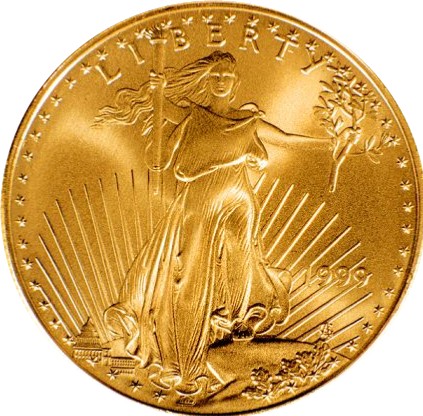Given that the debt-ceiling debate is likely to continue for a few months, examining the Constitution provides us with the reasons our nation has been plunged into this monetary morass.
Federal officials have now run up the federal government’s debt to more than $31.5 trillion. That’s a lot of money. And it’s also a lot of interest payments.
Too much debt is not a good thing, either for a family or a government. Even the big-spending members of Congress acknowledge this. That’s the point of establishing a maximum amount of debt that the federal government is permitted to incur — or a “debt ceiling.” The problem, of course, is that every time that limit is reached, Congress raises it, thereby enabling more debt to be piled onto the previous debt.
Nonetheless, there is nothing unconstitutional about the large amount of the federal debt. That’s because the Constitution expressly delegates the power to borrow money to the federal government.
However, the Constitution did provide one great big obstacle to the federal government’s incurring of too much debt. The Constitution made gold coins and silver coins the nation’s official money. This is reflected by the fact that the Constitution delegated the power to “coin” money to the federal government and did not delegate the power to “print” money to the federal government.
The intent of the Framers was made even clearer by the express restriction it placed on the states. The Constitution states that no state shall make anything but gold and silver coins legal tender.
Thus, the official money of the United States for more than a hundred years consisted of gold coins and silver coins. It is often said that America’s monetary system was based on paper money that was “backed by gold.” Nothing could be further from the truth. There was no paper money because the Constitution did not permit the issuance of paper money, which the people of that time called “bills of credit.” Not only was there no power delegated to the federal government to issue bills of credit or to “print” money, the states themselves were expressly prohibited from issuing “bills of credit” or paper money.
But the federal government, as previously noted, was empowered to borrow money, which meant the issuance of instruments of indebtedness, such as bills, notes, and bonds. Sometimes they circulated because of their ease of use in transactions. But everyone knew that these instruments of indebtedness weren’t money but rather promises to pay money. The money they promised to pay consisted of gold coins and silver coins — that is, the official money of the United States.
Let’s assume, hypothetically, that the federal government owned 2 tons of gold. Let’s also assume that it borrowed 1 ton of gold by issuing bills, notes, and bonds. Let’s also assume that they spent everything they borrowed. Obviously, there would be no problem. When lenders demanded payment for their bills, notes, and bonds, the government could easily pay everyone off with the 2 tons it originally had in its possession.
 What if they instead issued bills, notes, and bonds totaling 2 tons of gold and spent it all? Again, there would be no problem because they could pay off everyone with the 2 tons of gold that the government originally owned.
What if they instead issued bills, notes, and bonds totaling 2 tons of gold and spent it all? Again, there would be no problem because they could pay off everyone with the 2 tons of gold that the government originally owned.
But what would have happened if they borrowed 4 tons of gold and spent it all? Then they would be in trouble. When people showed up to demand payment on their bills, notes, and bonds, the government would have had only 2 tons of gold and would have owed 4 tons. The government would have been bankrupt.
That’s how the gold-coin, silver-coin standard constrained federal borrowing. Federal officials knew that they could never borrow too much money or else they couldn’t pay off everyone.
That’s exactly what the Framers wanted. They didn’t want the federal government to be borrowing excessively. But they didn’t need to put a “debt ceiling” in the Constitution. They knew that America’s official money — gold coins and silver coins — that the Constitution established would operate as a brake on federal borrowing.
So, what happened? Where is that gold-coin, silver-coin system that the Constitution established? One thing is clear: There never was a constitutional amendment that abolished the gold-coin, silver-coin system that the Constitution established and that remained in existence for well over a century.
The answer is that President Franklin Roosevelt changed America’s monetary system to the paper-money standard that the Framers had rejected. And he did it without even the semblance of a constitutional amendment. He said that the Great Depression authorized him to modify the Constitution by changing the monetary system that the Constitution established.
Never mind the fact that the Constitution itself did not say that. In fact, the Constitution did not provide any “emergency” exception to its provisions, especially since the Framers knew that “emergencies” were the time-honored way for public officials to destroy the rights and liberties of the people.
Once FDR’s paper-money system was established, the floodgates were opened to out-of-control federal spending and debt. Federal officials began spending and borrowing to their hearts’ content, first for their welfare state and then also later for their warfare state.
Meanwhile, the Federal Reserve, which had been established in 1913, began printing the money to pay off the ever-increasing debt. That’s why the purchasing power of the dollar ever since FDR’s paper-money system went into effect has, decade after decade, plummeted. That’s also the reason the American people are now on the hook for more than $31 trillion in debt, which amounts to more than $246,000 per taxpayer.
Full story here Are you the author? Previous post See more for Next postTags: Featured,Hornberger's Blog,newsletter


























